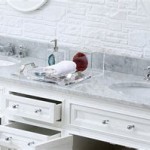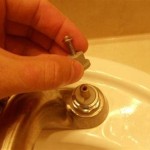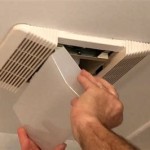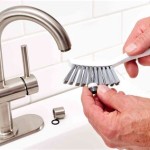Is Moldy In The Bathroom Harmful To Humans If Inhaled It?
The presence of mold in a bathroom environment is a common concern for many homeowners. Bathrooms, by their very nature, are prone to high humidity and moisture levels, creating ideal conditions for mold growth. The question of whether inhaling mold spores present in a bathroom poses a health risk to humans is a legitimate and important one, necessitating a thorough understanding of mold types, exposure risks, and potential health implications.
Mold is a type of fungus that thrives in damp, dark, and poorly ventilated areas. It reproduces by releasing microscopic spores into the air. These spores are ubiquitous, meaning they are virtually everywhere, both indoors and outdoors. The problem arises when these spores find a suitable environment to colonize and grow, leading to visible mold growth and increased spore concentrations in the air. Bathrooms, with their frequent use of water and potential for leaks, are prime locations for this unwelcome growth.
While not all molds are inherently toxic, some species can produce substances called mycotoxins. These mycotoxins can be harmful to humans and animals upon exposure, primarily through inhalation, ingestion, or skin contact. The severity of health effects can vary depending on the type of mold, the concentration of spores, the duration of exposure, and the individual's susceptibility. Therefore, understanding the potential risks associated with moldy conditions in the bathroom is crucial for maintaining a healthy living environment.
Identifying Potential Risks of Mold Exposure in Bathrooms
Determining the potential hazards of mold exposure in a bathroom requires recognizing the factors that contribute to a heightened risk. Not every instance of mold warrants extreme alarm, but certain circumstances necessitate immediate attention and remediation efforts.
Firstly, the type of mold present is a significant factor. Some mold species, like *Stachybotrys chartarum* (commonly known as black mold), are known to produce potent mycotoxins. While its presence does not automatically equate to severe health problems, it certainly increases the potential for adverse reactions. Other common bathroom molds, such as *Cladosporium*, *Aspergillus*, and *Penicillium*, may trigger allergic reactions or respiratory issues in sensitive individuals. Identifying the specific type of mold requires professional testing, but visual inspection can provide clues regarding the potential risk level. Dark, slimy, or strongly musty-smelling mold growths should be considered more concerning than small patches of white or powdery mold.
Secondly, the concentration of mold spores in the air is a critical determinant of risk. A small, contained area of mold growth might release relatively few spores, posing a minimal threat. However, extensive mold infestations can dramatically increase spore concentrations, leading to greater exposure and potential health effects. In poorly ventilated bathrooms with significant mold growth, the air quality can be significantly compromised, especially during and after showering or bathing when humidity levels are elevated.
Thirdly, the duration of exposure plays a crucial role. Brief, infrequent exposure to low levels of mold spores is unlikely to cause significant health problems for most people. However, prolonged or repeated exposure, particularly in poorly ventilated spaces, can increase the risk of developing adverse health effects. Individuals who spend a considerable amount of time in a moldy bathroom, such as those with mobility issues or those who frequently use the bathroom for extended periods, are at a higher risk.
Finally, individual susceptibility is a major factor. Some individuals are more sensitive to mold spores than others. People with allergies, asthma, weakened immune systems, or pre-existing respiratory conditions are more likely to experience symptoms upon exposure. Infants and young children are also more vulnerable due to their developing immune systems. Even healthy individuals can develop sensitivity over time with repeated exposure to high concentrations of mold spores.
Common Health Effects Associated with Inhaling Mold Spores
Inhaling mold spores from a moldy bathroom can lead to a variety of health problems, ranging from mild allergic reactions to more severe respiratory illnesses. The specific symptoms and their severity depend on the factors outlined above, including the type of mold, concentration of spores, duration of exposure, and individual susceptibility.
One of the most common reactions to mold exposure is allergic rhinitis, also known as hay fever. Symptoms of allergic rhinitis include sneezing, runny nose, nasal congestion, itchy eyes, and sore throat. These symptoms are triggered by the immune system's response to mold spores, which it misidentifies as harmful allergens. Individuals with pre-existing allergies are more likely to experience these symptoms, but even those without known allergies can develop them after repeated exposure.
Asthma sufferers are particularly vulnerable to the effects of mold exposure. Mold spores can trigger asthma attacks, leading to wheezing, coughing, shortness of breath, and chest tightness. In some cases, mold exposure can even contribute to the development of asthma in individuals who were not previously diagnosed with the condition. Controlling mold growth in the bathroom is especially important for individuals with asthma or other respiratory conditions.
Mold exposure can also cause other respiratory problems, such as sinusitis, bronchitis, and hypersensitivity pneumonitis. Sinusitis is an inflammation of the sinuses, often accompanied by facial pain, headache, and nasal discharge. Bronchitis is an inflammation of the bronchial tubes, leading to coughing, chest congestion, and fatigue. Hypersensitivity pneumonitis is a rare but serious condition in which the lungs become inflamed due to an allergic reaction to inhaled substances, including mold spores. Symptoms of hypersensitivity pneumonitis include shortness of breath, cough, fever, and chills.
In some cases, mold exposure can lead to more systemic symptoms, such as headache, fatigue, memory problems, and difficulty concentrating. These symptoms are often referred to as "mold sickness" or "sick building syndrome." While the exact mechanisms by which mold exposure causes these symptoms are not fully understood, it is believed that mycotoxins play a role. Mycotoxins can suppress the immune system, disrupt hormonal balance, and damage the nervous system.
It is important to note that not everyone who is exposed to mold will experience symptoms. Some individuals are more resilient and can tolerate higher levels of mold exposure without adverse effects. However, even seemingly healthy individuals can develop sensitivity over time with repeated exposure to high concentrations of mold spores. Therefore, it is always prudent to take steps to prevent and remediate mold growth in the bathroom.
Practical Steps for Prevention and Remediation of Bathroom Mold
Preventing mold growth in the bathroom is always preferable to dealing with an existing infestation. By taking proactive measures to control moisture and humidity, one can significantly reduce the risk of mold development.
Adequate ventilation is crucial. Ensure that the bathroom is well-ventilated, especially during and after showering or bathing. Use an exhaust fan to remove moisture from the air. If the bathroom lacks an exhaust fan, consider installing one or opening a window to allow for air circulation. Keep the exhaust fan running for at least 30 minutes after showering or bathing to ensure that the moisture is completely removed.
Promptly address leaks and water damage. Leaks from plumbing fixtures, such as faucets, toilets, and showerheads, can provide a constant source of moisture that fuels mold growth. Inspect the bathroom regularly for signs of leaks, such as water stains, damp spots, or dripping sounds. Repair any leaks immediately to prevent mold from taking hold. Similarly, promptly clean up any spills or water damage that occurs in the bathroom.
Maintain a clean and dry bathroom environment. Regularly clean the bathroom surfaces, including the shower walls, tub, sink, and toilet, to remove dirt, soap scum, and other organic matter that can serve as a food source for mold. Use a bathroom cleaner that contains a fungicide to kill mold spores and prevent their regrowth. Wipe down wet surfaces after showering or bathing to remove excess moisture. Store towels and bath mats in a dry place to prevent them from becoming breeding grounds for mold.
Control humidity levels. Use a dehumidifier to reduce humidity levels in the bathroom, especially during periods of high humidity. Aim to maintain humidity levels below 60 percent. Consider installing a humidity monitor to track humidity levels and adjust ventilation or dehumidification as needed.
If mold is already present in the bathroom, remediation efforts are necessary to eliminate the problem and prevent its recurrence. For small areas of mold growth (less than 10 square feet), it may be possible to remove the mold yourself. However, for larger infestations or for individuals with allergies, asthma, or weakened immune systems, it is best to hire a professional mold remediation company.
When removing mold yourself, take precautions to protect yourself from exposure to mold spores. Wear gloves, a mask, and eye protection to prevent inhalation and skin contact. Use a mold-killing cleaner to scrub the moldy surfaces. Dispose of any moldy materials, such as drywall or carpeting, in sealed plastic bags. Thoroughly clean and disinfect the affected area to prevent mold from returning.
Professional mold remediation companies have the expertise and equipment to safely and effectively remove mold infestations. They will assess the extent of the problem, contain the affected area to prevent the spread of mold spores, and use specialized equipment to remove the mold and disinfect the area. They will also identify and address the source of moisture that is fueling the mold growth to prevent future infestations.
In conclusion, the presence of mold in a bathroom is a potential health hazard that should be addressed promptly and effectively. By understanding the risks associated with mold exposure, taking steps to prevent mold growth, and remediating existing infestations, one can create a healthier and safer bathroom environment.

Black Mold In Shower Is It A Cause Of Worry And What To Do About Aqa

Learn The Top 11 Symptoms Of Mold Exposure Toxic Syndrome

Black Mold Symptoms Health Signs Of Exposure Molekule

How Much Mold Exposure Is Harmful

How Much Mold Exposure Is Harmful

What Are The Symptoms Of Black Mold Exposure Water Damage Restoration Flood Cleanup Certified Inc

Symptoms Of Mold Exposure In House And More
Can Toxic Mold Grow Under Shower Tile Know The Risks

What To Know About Bathroom Mold And When You Should Worry

Black Mold Pictures Causes And Signs Ultimate Guide
Related Posts







